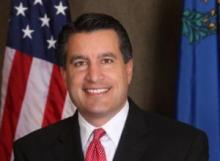Medicaid Wall Beginning To Crack

Progress has been made on the issue of Medicaid expansion this month. A mandate was passed down by the Obama administration and some governors have spoken out in surprising ways about their stances on expansion.
As part of the Affordable Care Act, states were mandated to expand Medicaid to individuals at or below 133% of the federal poverty level ($34,575 for a family of four). The Supreme Court later ruled that states have the option to expand. The federal government will pay 100% of the costs in 2014 and gradually shrink to 90% beginning in 2020.
The Kaiser Family Foundation has estimated that if all states expand their Medicaid programs, state spending would increase $76 billion through 2022 and the federal government would pick up $1.03 trillion of the cost. More than 20 million new people would be covered.
Whether or not states will expand has been a question since the Supreme Court’s ruling. Many with Republican leadership are still uncertain. Politics and cost are the predominant reasons state leaders are holding out on decision making.
But this past week, the Obama administration answered one of the major questions about expansion.
Some states were considering expanding Medicaid eligibility below the 133% poverty level – up to 115%, for instance. They wanted to know if they would still receive the federal matching dollars. The administration said no: states must expand to 133% to receive funding.
One day after this decision was handed down, the nation’s first Republican governor has decided to expand in his state. Nevada’s Brian Sandoval has decided to broaden coverage to more than 75,000 Nevadans. The increase will cost the state $84 billion, but will allow some mental health and substance abuse patients to move off of state-funded programs and into Medicaid. This is expected to save $17 million.
Experts agree that this will likely be a trend – that it will be exceedingly difficult for states to turn down federal funds in a still-struggling economy.
“Texas is estimated to receive $52 billion in federal Medicaid money over five years,” said Caroline Pearson, director in the health reform practice at Avalere Health LLC, a Washington, D.C.-based advisory company. “That is a huge infusion of money to a local economy and governors will be hard-pressed to say no to that.”
Pearson also said there will be a lot of pressure from health care providers to accept the expansion. Hospitals, in particular, will be hit because the ACA reduced excess funding that they formerly received to treat low-income populations. This was supposed to balance out, in part, because more patients would have been insured through Medicaid.
“These cuts will happen either way and if there is expansion in some states, providers will be in a tough economic situation,” Pearson said.
To date, she said 10 governors have indicated that they are against expansion. One of whom is South Dakota’s Dennis Daugaard, who spoke out earlier this month on the issue. He said he doesn’t want to provide coverage to the more than 44,000 “able-bodied” residents of the state.
Judy Solomon, vice president for health policy at the Center on Budget and Policy Priorities, said there is some truth to Daugaard’s statement, though he is missing the mark.
“Many are working adults,” she said. “But them being able-bodied really isn’t the point. These are very low-income people who are working in retail, restaurants or putting part-time jobs together where they don’t have insurance and can’t afford it.”
To get an understanding of what groups of people would be covered under the expansion, The Kaiser Family Foundation held focus groups in November talking with people who would be eligible in Florida, Nevada, Ohio and Texas.
What it found was a diverse group of adults: some lived alone, some with families; they were single and married; some are unable to work because they care for family members with extensive health care needs; some are young and some are retired; most were employed in low-wage jobs; some had multiple part-time jobs; some were unemployed for short periods, others for longer stretches of time; many had mental or physical health conditions. The one thread that links them all, however, is that they cannot afford health insurance.
Solomon said one important thing to remember is that these people are already in the system.
“You can’t think of them as coming to the state for the first time,” she said. “They are getting services already but probably not the right ones at right place at right time.”
The good news for states is that there is no deadline to make a decision. The only penalty is that, by waiting longer, they will miss out on some of the matching funds.
Frederick Isasi, senior health policy advisor at The Advisory Board Company, estimates that states will eventually take the funding. When Medicaid and the State Children’s Health Insurance Programs were enacted, some states were slow to get on board, but they all did eventually.
“Another good example is the state fiscal relief included in the Recovery Act: there were a lot of states that said they wouldn’t accept the money, but in the end they all accepted it,” he said. “Historically, states almost always end up taking Medicaid funding.”






